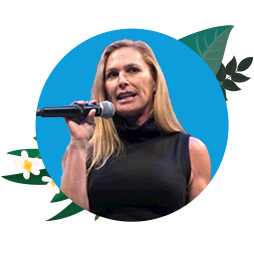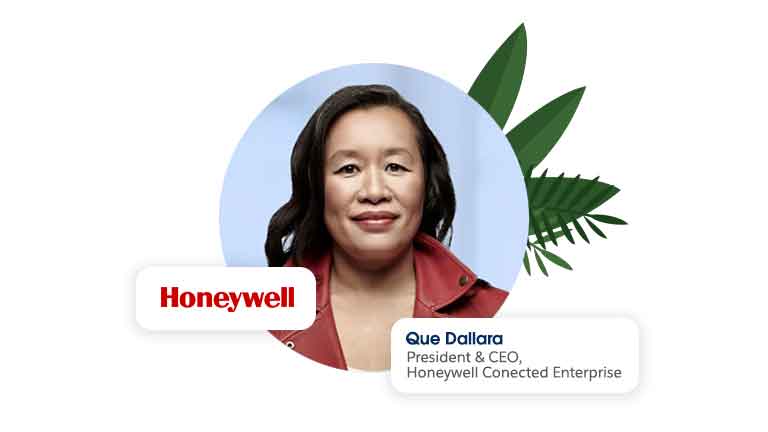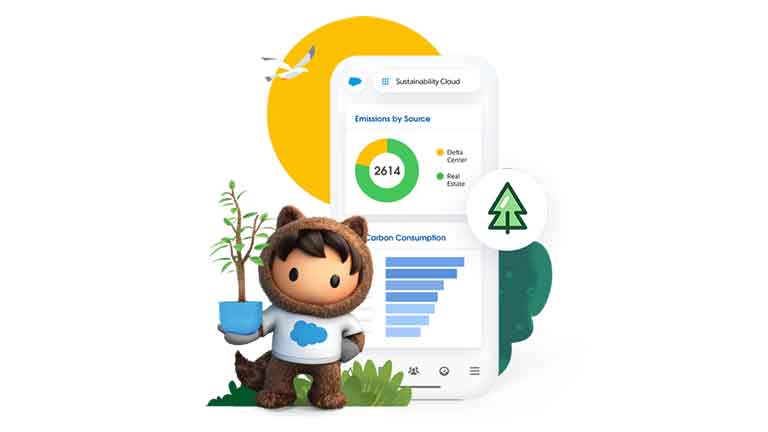Leading to Net Zero: 6 Key Priorities for Your Business's Sustainability Strategy
Creating a more sustainable future is everyone’s responsibility. Here’s what business leaders can do to use their power for good.
Global Head of Sustainability, Salesforce
Look around on a peaceful day with a clear blue sky and it's easy to connect emotionally to our beautiful planet. At the same time, Earth needs our help. Climate change is an emergency we must work together to fix, right here and right now. Whether it's a moment of fearful preparation for an oncoming storm, a whiff of wildfire smoke, the loss of the year's harvest, or a deep and personally devastating tragedy, each of us is deeply connected to the climate emergency. Our children deserve a healthier and more just future. In order to deliver for today and for the next generation, we need to take bold action now.
Business leaders, especially CEOs, shoulder a unique responsibility in this unprecedented moment. After all, the strength of their business depends on it. A productive and resilient economy can only operate within a healthy society, and a healthy society needs a stable and flourishing environment as its base. Ask your employees. Listen to your customers. They are calling for climate action in greater and greater numbers. And the cries will only become louder.
At Salesforce, our climate strategy begins with the recognition that there's only one, single, shared global goal — a just transition to a 1.5 degree Celsius future — and we are committed to doing all we can to reach it. We will decarbonise our operations and align our full value chain to that goal, compensating for all emissions we cannot avoid or reduce each year from now on. But we're aiming much higher because the planet needs more than that. That's why we use our voice, mobilise others around us, and use our technology to accelerate others on their own journey to net zero.

“Now more than ever, it is of vital importance for businesses to become climate advocates. We’re facing irreparable harm to our planet, so we need all businesses to use not only their influence but also their core competencies and rapid innovation to create solutions that will tackle climate change.”

The Six Priorities of Climate Action
At Salesforce, we began our Climate Action Plan by asking ourselves how we could use the full power of our business to effect meaningful change:
- What we do. How can our products, services, and mission amplify climate action?
- Our operating model. How can we align our full value chain to a 1.5 degree future?
- Our influence. Which stakeholders can we influence, and how, in order to catalyse the global change the planet needs?
The answers enabled us to devise a framework that spoke to our unique core competencies: customer success and digital transformation. But the approach is universal, and we offer it as a blueprint for others to take action to accelerate their journey to net zero.

“We all have a role to play, based on our unique skills, resources, and core competencies — I challenge you; what can you do with what you have in your toolbox to deliver impact that planet Earth might actually notice?”
Priority 1: Reduce emissions
Everything your business does likely generates greenhouse gas emissions, from manufacturing to digital infrastructure to offices and travel. To reduce those emissions in a meaningful way, embed sustainability into operational decisions using a practical, iterative approach. Most importantly, undertake all emissions reduction activity with system change as the end goal. At Salesforce, we monitor, avoid, and reduce greenhouse gas emissions across our operations and value chain, aiming to do so in a way that spurs systemic changes that will achieve emissions reductions at a globally relevant scale.
To do this, we have taken the shared global goal and set out to internalise it. Our aim is to reduce our full value chain annual emissions by 50% by 2030 and near zero by 2040, using 2019 data as a baseline. We will integrate sustainability into our built environment program, reduce the carbon intensity of our infrastructure, reduce business travel emissions and enable sustainable travel, and engage our suppliers to set their own science-based targets.
We can’t meet our emission reduction goals on our own, and we don’t have all the answers for how we’ll succeed. It will take unprecedented cooperation, especially up and down the value chain. The next big wave of climate action will come from innovations that span the customer-supplier relationship, and as the world’s leader in customer relationship management, we know we have an important role to play.
Priority 2: Remove carbon
Priority 3: Restore our ecosystem
Priority 4: Educate and mobilise
Priority 5: Innovate
Priority 6: Advocate regulation and policy

How to Do Your Part
The truth is, planet Earth cannot scream more loudly for help than what we’re seeing today. As the scientists of the world agree, this is code red. We are in the greatest crisis our species has ever faced.
But even with all the devastation – from fires, floods, droughts, storms and smoke – there’s a positive way to look at it.
There’s never been greater positive impact available to any human being, like that of time spent on climate action today. Your children and grandchildren, all the future generations of the world, will wonder what it was like to be part of the success story we’re about to write. It has to start today.
If not now, when?

Let’s get to net zero faster, together.
Related Content

Report
FY21 Stakeholder Impact Report

CEO Resources
C-Suite Leadership Page

Blog
Working From Home the Environmentally Friendly Way
More Resources

Product Overview
Salesforce Net Zero Cloud

News
Inside Salesforce’s Clean Energy and Carbon Programs

Sustainability Resources
Salesforce’s Commitment to Sustainability
